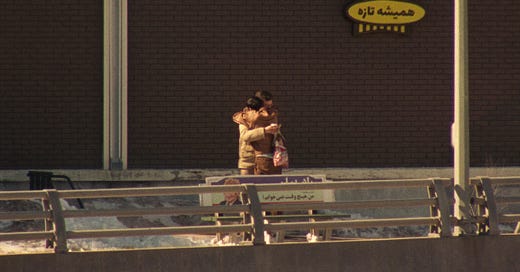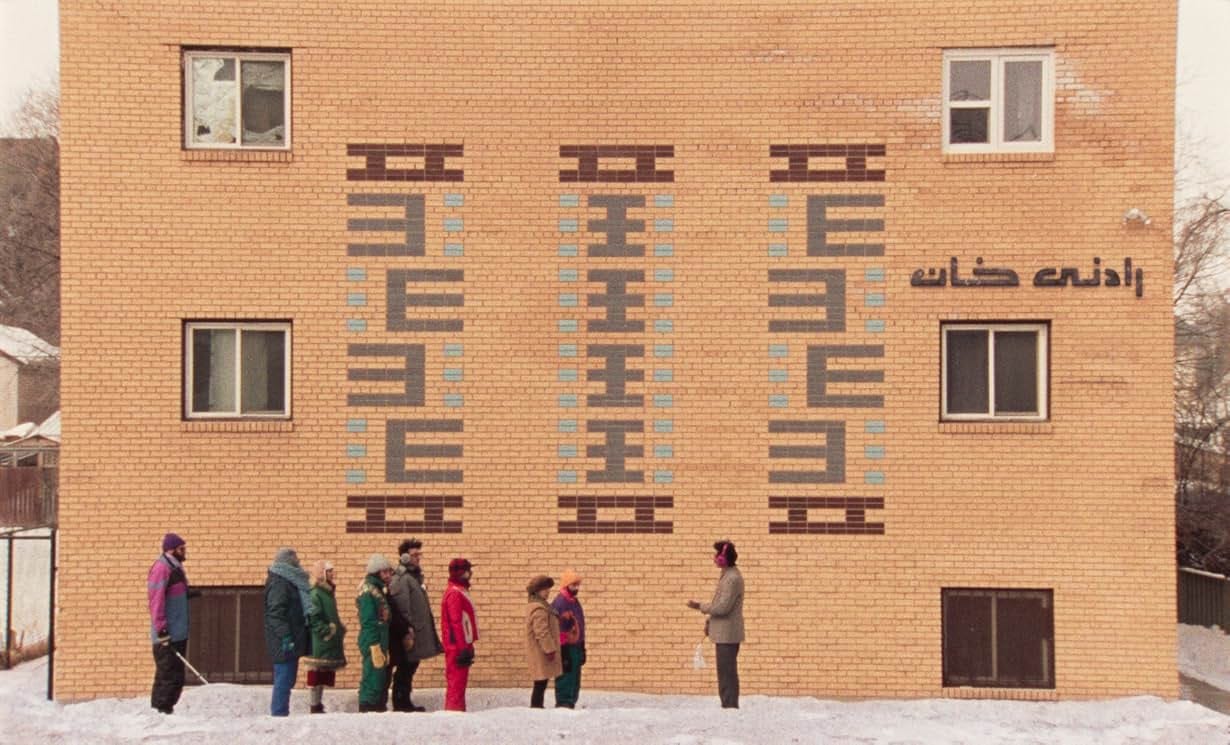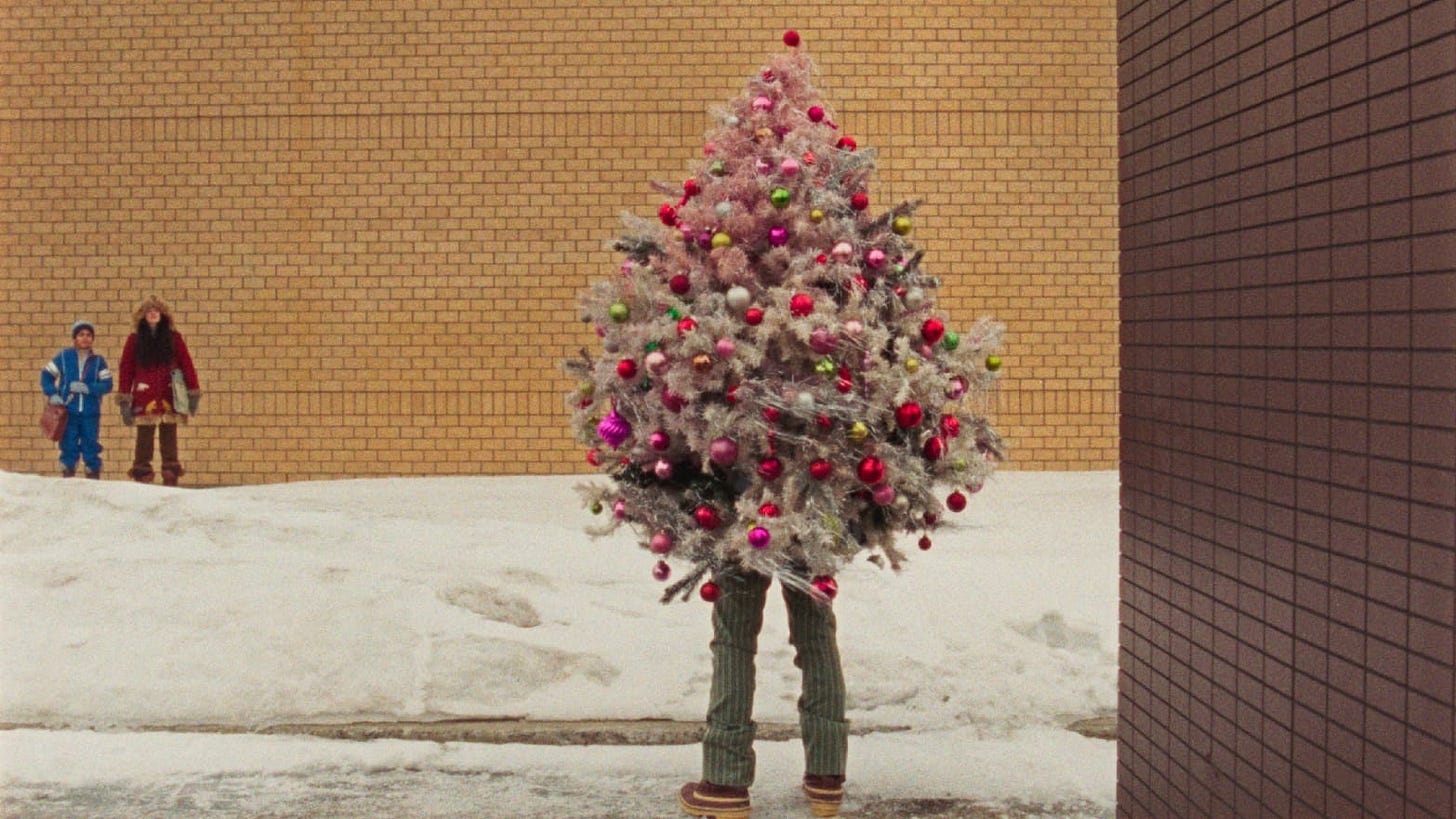Introducing ‘As Seen On’, a section of this newsletter reserved for my love of fashion, where I will also blab about visual language/storytelling in general :)
First order of business, follow me on letterboxd please <3
I watched Universal Language at VIFF last month. The costume design was done by Negar Nemati, and I want to talk about how well her choices worked in telling this particularly strange and sentimental story. For context, Nemati’s accolades include working with Asghar Farhadi on A Hero & styling Taraneh Alidoosti, to name a few.
The film itself is Canada’s entry for Best International Feature Film at the Oscar’s this year. Mathew Rankin is the director, one of 3 credited writers, and an actor in the film. He also happens to be a white guy from Winnipeg. Pirouz Nemati is both a writer and actor in the film as well. Together they’ve produced this absurdist comedy-drama which was promoted as “the charmingly impossible story of a Canada where Persian and French are the two official languages, and loneliness is the common currency.”
As an early French immersion kid, there was a period of my childhood where I was constantly mixing words from French into English into Persian, and vice versa. To say that the bilingualism in this film scratched a very specific artistic itch for me is an understatement. Scenes that genuinely made me chuckle include the insane commercial interlude with salesman Jean Suisur, and the shot of Tim Hortons having “hamishe taze” in Persian script written as the slogan.
Visually, I was struck most by how accurately what I was seeing on the screen resembled the photos I have of my parents, a lifetime ago, when they first immigrated to Toronto. The grey and beige of their surroundings, their late 80s/early 90s winter sports aesthetic, and the distinct impression I get from their expressions that something is out of place. That depiction on the big screen had me feeling connected to the Iranian-Canadian diaspora in a way that I usually don’t. The pink earmuff wearing tour guide, for instance, immediately called to mind the way my father still dresses in his business-casual suits for work, often refusing to put on an additional jacket in the winter, opting simply to include a toque and mittens to the outfit.
A lot of the shots in the film have a really effective minimalism to them. I most enjoyed how the protagonists wardrobe functioned against simple concrete backgrounds. Negin and Nazgol, the sisters who initially set off on a mission to retrieve a bill that’s frozen into the ground, are dressed perfectly for their roles. Each in a different primary color, with subtle details in silhouette and accessories that distinguish the younger sisters bold tomboy demeaner from the others soft femininity.
Matthew Rankin’s own role in this film is that of a depressed government worker in Quebec who quits his job to finally journey back to Winnipeg and reconnect with his estranged mother. Even this depiction feels somehow deeply Iranian, or at least deeply diasporic to me. Unsurprisingly, Rankin cites Iranian filmmakers as among his greatest influences. He even attempted to study film in Iran… he lived there during and immediately after 9/11….(I’m sorry but his brief commentary about this is so funny to me…Why is this guy so obsessed with Iran??) In addition to the clear cultural and stylistic influence Iranian cinema has here, Universal Language also has a visual tone that is reminiscent of a Wes Anderson film. The children as protagonists are daring, rebellious, and slightly cartoonish. Much like in Moonrise Kingdom, for example, they are often seen against a consistent, simple backdrop. The water and the forest function as such for Suzy and Sam in Moonrise Kingdom, while beige bricks and snow do so for Negin and Nazgol in Universal Language. Certainly, the color palette alone, not to mention these landscape connotations, do well to communicate the ‘loneliness’ that seems to be the film’s primary thematic concern. My take away though, in large part due to the costuming, is that even deep sadness gets punctuated by silly absurdity, and that this ought to be regarded as a unifying reality.
For me, this film is an example of when art is able to do something compelling, despite itself. I don’t feel the need to go into it but there are certainly aspects of the script and the creation of this film that I personally find annoying. And yet, the visual language here was able to communicate something more enduring. I like when a piece of art does that, when I get reminded of how many different dimensions there are to telling stories.







